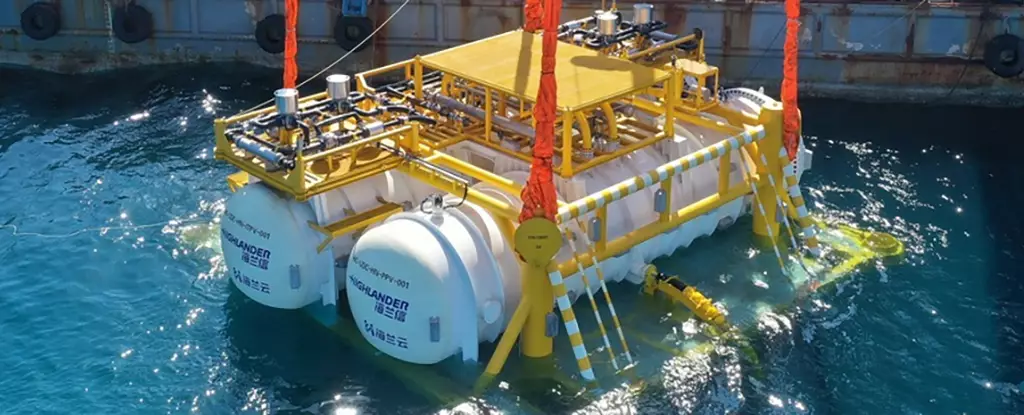In today’s digital age, the amount of data being generated on a daily basis is staggering. From emails to online music streaming, all of this information needs to be stored somewhere. Recognizing the need for innovative solutions, China is taking a bold step by placing data centers underwater. While this concept may seem unconventional, it offers several benefits that traditional land-based data centers cannot provide.
One significant advantage of underwater data centers is the efficient use of land. The plan is to establish 100 of these underwater data centers by 2025, which will occupy an area of approximately 68,000 square meters. This space-saving approach frees up land that can be utilized for other purposes or remain undeveloped. In fact, the planned underwater data centers would occupy an area equivalent to 13 football fields.
Another key advantage of submerging data centers underwater is the natural cooling effect of seawater. These data centers require extensive cooling systems to prevent overheating, which consumes large amounts of electricity. By harnessing the cooling properties of seawater, an estimated 122 million kilowatt-hours of electricity per year can be saved. To put this into perspective, it is equivalent to the average electricity usage of 160,000 Chinese citizens. This substantial reduction in energy consumption contributes to sustainability efforts and cost efficiency.
Technical Challenges and Environmental Impact
Although the benefits are evident, submerging massive 1,300-ton data center units underwater is no simple task. These units must be constructed to withstand the pressure and corrosion caused by seawater. Furthermore, it remains unclear how the presence of these electronics will impact marine ecosystems. As each underwater data center has the processing power to manage 4 million high-definition images every 30 seconds, it is vital to assess and address any potential environmental consequences.
While the concept of underwater data centers may seem groundbreaking, it is not entirely new. Microsoft was already experimenting with the idea back in 2016. However, China’s Hainan Undersea Data Center represents the first commercial venture of its kind. Through a partnership between the government and private companies, this underwater data center was established off the coast of Sanya, in the Hainan province.
The Hainan Undersea Data Center project exemplifies the durability and longevity of these underwater data centers. Designed to last 25 years, these facilities ensure long-term data storage and management. In an era where the demand for energy-intensive AI technology continues to rise, such initiatives are vital to meet the growing energy requirements.
The world is generating an unprecedented amount of digital information, prompting the need for innovative storage solutions. China’s underwater data centers offer efficient land utilization, reduced energy consumption, and long-term data management capabilities. While there are technical challenges to overcome and potential environmental implications to consider, the development of underwater data centers signifies a step towards sustainable and energy-efficient solutions. As technology advances and data generation continues to surge, it is clear that more innovative approaches like this will be required to keep pace with the evolving digital landscape.

Leave a Reply